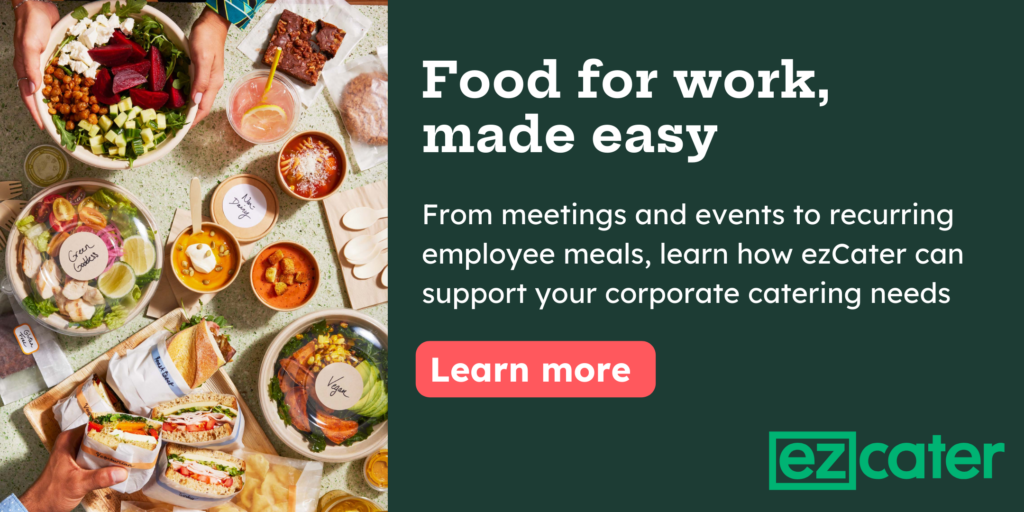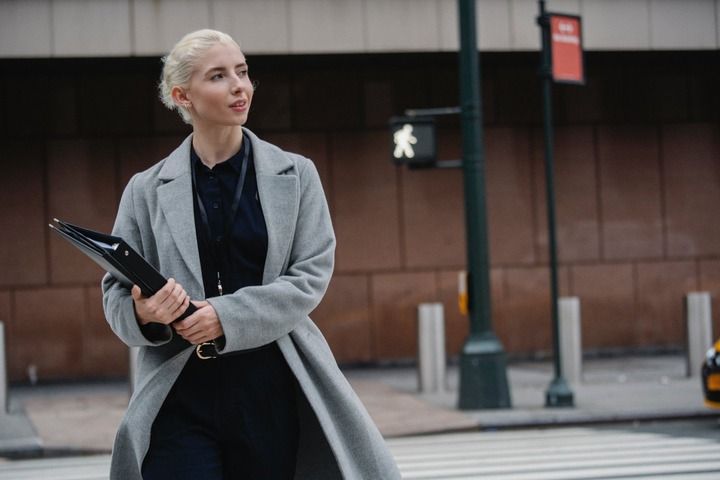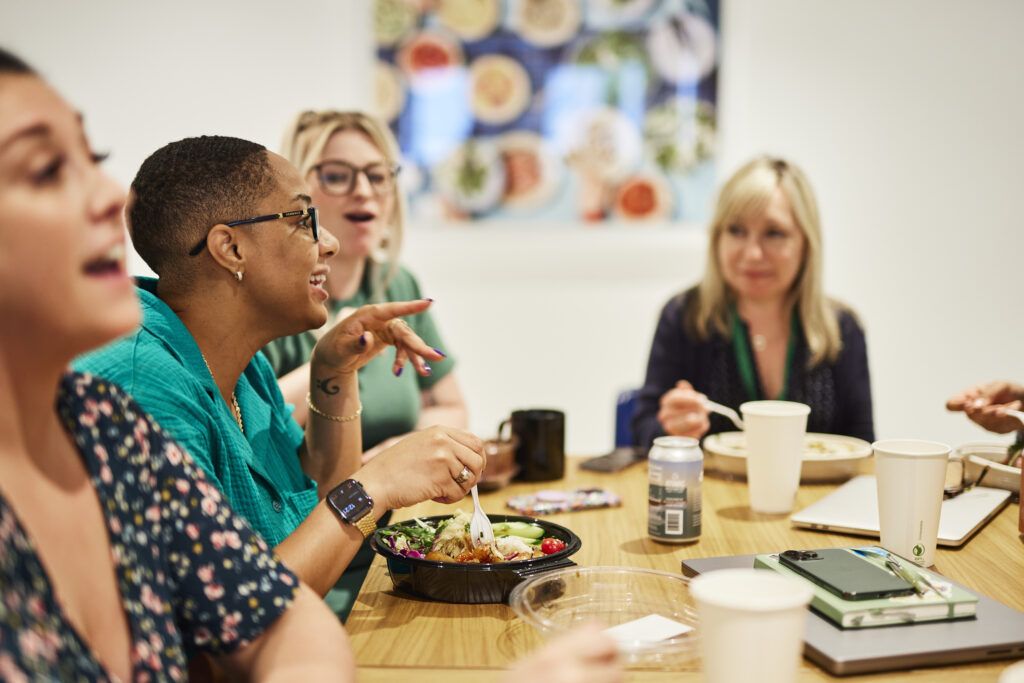Now that 2024 has arrived, it’s the perfect moment to think about how the workplace is changing and what surprises the year might have in store. For 16 years, ezCater has weathered the constantly changing dynamics of the workplace — including the post-pandemic world, where we’ve not only thrived but also helped restaurants and caterers across the country thrive as well.
This year, Diane Swint, ezCater’s Chief Revenue Officer, shares her predictions of the shifts that will redefine how companies interact, collaborate, and find greater satisfaction in their jobs in the coming year and beyond. Here’s a look at what she sees on the horizon.

What the future of work will look like in 2024
According to Swint, four key trends will have a major impact on workplaces in 2024. If you’re an HR professional, business owner, or workforce leader, understanding these future work trends can help you stay ahead of the curve and make your company stand out in 2024 and beyond.
Optimizing hybrid work environments

As many as 90% of companies plan to require workers to return to the office by the end of 2024. However, remote work trends indicate that won’t be 40 hours of in-person work. The majority will allow employees to work remotely at least one day per week.
While workers say they love the flexibility remote and hybrid work offers, a growing number say there’s a downside: isolation and loneliness.
According to recent findings, 53% of men and 39% of women who work remotely report struggling with loneliness. Swint sees this as a trigger for a significant shift in the workplace.
“More folks might start heading into the office, not because they have to, but for the camaraderie and buzz you just can’t get from a Zoom call,” says Swint. “Loneliness does more than just make us feel sad, it actually affects how engaged and productive we are. That’s why it’s so important to turn the office into a social place where employees can connect with their coworkers.”
How can you make the office more fun? Swint believes in the power of office perks to make coming to the office feel less like a requirement and more like something to look forward to.
“A nice, free lunch at work or maybe a yoga session to stretch out the stress can turn the office into a place where people actually want to spend time,” she says.
Creating a culture where everyone respects hybrid office etiquette standards and social interaction is encouraged can help companies establish a hybrid work environment where employees can thrive over the long term.

Employers may adopt a hospitality mindset

With many workers still hesitant about returning to the office full-time, companies are recognizing the need to make the workplace more inviting. Forward-thinking employers are adopting a “hospitality mindset” — a strategy aimed at making the office environment as appealing — or more so — than working from home.
“A hospitality mindset in the workplace is about creating an environment where employees feel genuinely cared for and valued”
Diane Swint — Chief Revenue Officer at ezCater
“A hospitality mindset in the workplace is about creating an environment where employees feel genuinely cared for and valued,” explains Swint. “It’s about moving beyond the basics of a functional office and instead offering perks that make each day at work a bit more enjoyable.”
What does a hospitality mindset look like in action? Picture walking into your office and being greeted by the aroma of gourmet coffee or seeing artfully arranged charcuterie or catered sushi, or having the opportunity to end each day with a group fitness class before hopping in the car to commute home.
Some employers take things a step further, offering personal convenience services, like dry cleaning drop-offs or car washes, to help employees find a better work-life balance. Creating chill-out zones or game rooms where employees can unwind or catch up with colleagues can also help turn the office into a place where employees want to be, not just where they have to be.
“It’s the little things that show we care,” says Swint. “When the office becomes a place that people look forward to visiting, that’s when you really start to see the magic happen — better teamwork, higher morale, and a noticeable jump in job satisfaction.”
Expect more “water-cooler moments”

In 2024, expect employers to place more emphasis on creating opportunities for “water-cooler moments” — the informal, often spontaneous, interactions that occur outside of structured meetings. It turns out, these quick catch-ups and light-hearted talks around the office aren’t just for fun — they’re key to team bonding and sparking some real collaboration.
“Organizing events like a catered bagel breakfast or an office happy hour can transform break times into opportunities for employees to chat, connect, and spark new ideas,” says Swint. “These seemingly small interactions can make a big difference in how teams work together. They’re the building blocks of a strong, cohesive workplace culture.”
There’s more to these gatherings than just unwinding. They create a space where employees from different departments or organizational levels can interact in a relaxed setting, breaking down barriers and fostering a more inclusive company culture.
“It’s pretty amazing to see how these casual meet-ups can knit together a workforce,” Swint points out. “Suddenly, you’re not just colleagues, you’re part of a community, each with a unique story and perspective to share.”
Lunch breaks will be big

Lunch breaks are set to make a major comeback in 2024. According to insights from ezCater’s 2023 Lunch Report, taking time out for lunch does wonders for job performance and keeping burnout at bay. When employees do take some time for themselves to eat something and step away from their work station, it improves job performance by 78%. And as more employers begin to understand the importance of these breaks, you can expect to see a shift in workplace culture. In fact, a recent survey by Resume Builder indicates that 46% of companies plan to use catered meals to motivate workers to come in.
“Lunch breaks are more than just a chance to grab a bite to eat, they’re an opportunity to rejuvenate and re-focus.”
Diane Swint — Chief Revenue Officer at ezCater
“Employers are starting to see the real value in stepping away from the desk,” observes Swint, “Lunch breaks are more than just a chance to grab a bite to eat, they’re an opportunity to rejuvenate and re-focus.”
In the coming year, you can expect to see many employers taking steps to bring lunch breaks back. This could be as simple as encouraging employees to block off breaks as non-negotiable appointments. Some companies will take a more formal approach, such as planning weekly catered lunches. Regardless of the method, the overall goal is to make sure employees have a chance to fully disengage at least once a day, giving them the chance to relax and recharge.
Prepare for the future of work with ezCater
The coming year is shaping up to be a time of positive shifts in how people work, and ezCater is here to help you embrace those changes. Whether you’re looking to perk up your team’s lunch routine or thinking of creating bonding opportunities through in-office breakfasts or a fun happy hour, we’ve got the catering solutions to make it happen. Learn how ezCater can bring these food for work predictions to life for your company in 2024.








